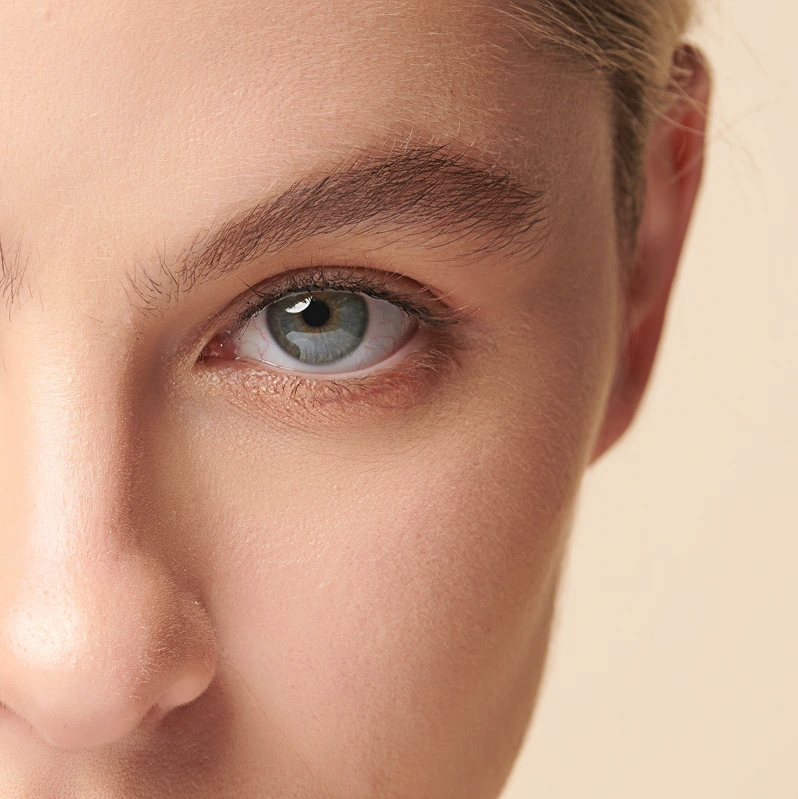
Blepharoplasty
in Phoenix, AZ
One of the earliest signs of aging is drooping eyelids. At Regency Specialties, we combine years of surgical expertise with the latest techniques and technology to restore a youthful appearance to the eyes with our eyelid surgery. Our patients can rejuvenate their facial contours and enjoy a higher quality of life by undergoing this transformative procedure.
What Is Eyelid Surgery (Blepharoplasty)?
With age, eyelids stretch as the muscles supporting them weaken. Excess skin and fat can gather above and below your eyelids, causing sagging eyebrows, droopy upper lids, and bags under the eyes. Severely sagging skin around the eyes can also obstruct peripheral vision.
Blepharoplasty is a cosmetic surgery that removes excess skin from the eyelids to reduce vision obstruction and make the eyes look younger and more alert. This procedure can be performed on the upper, lower, or both eyelids, rejuvenating the area surrounding your eyes.
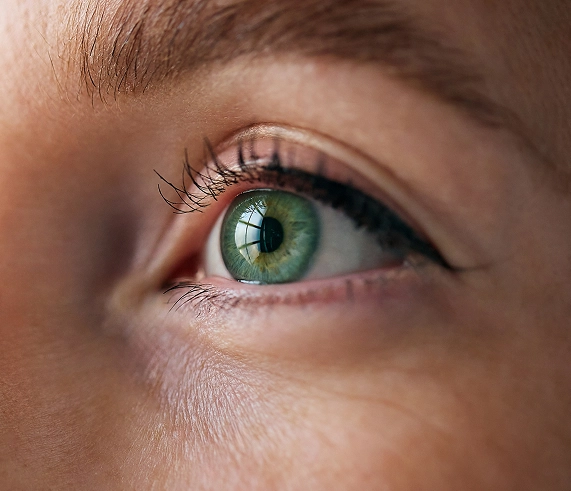
Types of Blepharoplasty
Upper Eyelid Blepharoplasty
Upper blepharoplasty is designed to address loose skin and droopy eyelids that develop over time due to aging or genetics. This upper eyelid surgery removes or repositions excess skin and fat, restoring a smoother, more defined eyelid contour. By lifting the upper eyelids, patients can achieve a more alert, refreshed appearance while also alleviating any heaviness that may obstruct vision. This type of eyelid lift is often performed under local anesthesia.
Lower Eyelid Blepharoplasty
Lower eyelid surgery targets excess fat and sagging skin beneath the eyes, which often causes puffiness and a tired look. This procedure is a powerful tool in facial rejuvenation, helping patients achieve a smoother under-eye area and a more youthful appearance. Lower blepharoplasty can also tighten the skin and reduce fine lines, enhancing the natural contours of the face.
Quad Blepharoplasty
Quad blepharoplasty is a comprehensive surgical procedure that simultaneously addresses the upper and lower eyelids. By combining upper blepharoplasty with lower blepharoplasty, this dual approach offers complete eyelid rejuvenation in one session. Patients seeking more dramatic results often choose quad blepharoplasty to restore harmony to the entire eye area and achieve a balanced, refreshed facial appearance.
Upper Eyelid Blepharoplasty
Upper blepharoplasty is designed to address loose skin and droopy eyelids that develop over time due to aging or genetics. This upper eyelid surgery removes or repositions excess skin and fat, restoring a smoother, more defined eyelid contour. By lifting the upper eyelids, patients can achieve a more alert, refreshed appearance while also alleviating any heaviness that may obstruct vision. This type of eyelid lift is often performed under local anesthesia.
Lower Eyelid Blepharoplasty
Lower eyelid surgery targets excess fat and sagging skin beneath the eyes, which often causes puffiness and a tired look. This procedure is a powerful tool in facial rejuvenation, helping patients achieve a smoother under-eye area and a more youthful appearance. Lower blepharoplasty can also tighten the skin and reduce fine lines, enhancing the natural contours of the face.
Quad Blepharoplasty
Quad blepharoplasty is a comprehensive surgical procedure that simultaneously addresses the upper and lower eyelids. By combining upper blepharoplasty with lower blepharoplasty, this dual approach offers complete eyelid rejuvenation in one session. Patients seeking more dramatic results often choose quad blepharoplasty to restore harmony to the entire eye area and achieve a balanced, refreshed facial appearance.
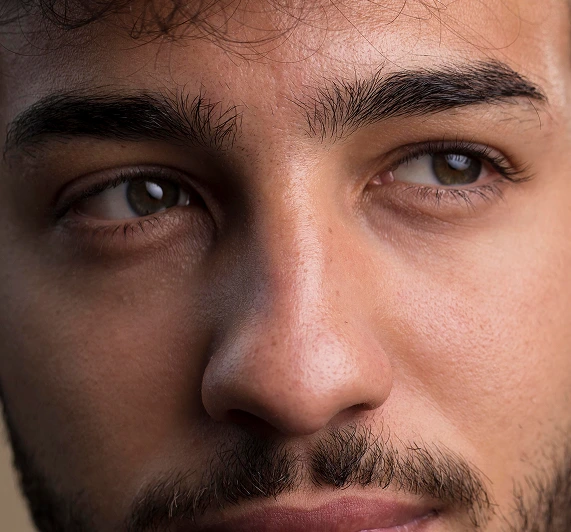
What Can Eyelid
Surgery Accomplish?
Our eyelids can become puffy or droopy with age, affecting our appearance and vision. Eyelid surgery (blepharoplasty) targets these areas of concern to “open” the eyes and make them appear more rested, youthful, and attractive.
Why Get Eyelid Surgery?
The eyes are one of our most essential features. They can communicate every emotion and are crucial for building trust and strong relationships with other people. Because of this, the eyes should never be hidden behind excess, puffy, or drooping skin. This can create an unpleasant resting face that makes people look sad, tired, or angry.
Some of the most common reasons why patients choose to undergo eyelid surgery are to improve:
- Sagging brows
- Under-eye bags
- Worsening of crow’s feet
- Fine lines around the eyes
- Extra skin in the lower or upper lids
Initial Consultation & Preparation
Preparation for blepharoplasty begins with a detailed consultation, during which our surgeon evaluates the patient’s eyelid anatomy, discusses goals, and reviews their complete medical history. This information is essential to determine candidacy for the procedure and to plan a surgical approach that aligns with the patient’s needs. Preoperative preparation may also involve discontinuing certain medications, arranging for post-surgical care, and undergoing routine health checks to ensure a safe and effective outcome.

How Eyelid Surgery Works
Step 1 - Anesthesia
To ensure comfort throughout the procedure, eyelid surgery can be performed under local anesthesia with sedation or general anesthesia, depending on the patient’s needs and the extent of the surgery. The operation typically takes between one to two hours.
Step 2 - Incisions in the Natural Eyelid Crease, Lash Line, or Inside the Eyelid
Precise incisions are made in discreet locations to minimize visible scarring. For the upper lids, the incision is usually placed within the natural eyelid fold. For the lower lids, the incision may be made just below the lash line or inside the lower eyelid, depending on the surgical technique chosen and the issues being addressed.
Step 3 - Correction of Droopy Eyelids, Under-Eye Bags, and Other Issues
Once the incisions are made, our surgeon removes or repositions excess skin, fat, and muscle to correct puffiness, sagging, and loose tissue. This includes performing an upper eyelid lift to improve the contour of the upper lids and a lower eyelid lift to reduce under-eye bags and create a smoother, more youthful appearance.
Step 4 - Incision Closure
After the necessary adjustments are made, the incisions are carefully closed with fine sutures or surgical adhesive. The precise closure technique helps minimize scarring and supports natural-looking results as the eyelids heal.
Step 1 - Anesthesia
To ensure comfort throughout the procedure, eyelid surgery can be performed under local anesthesia with sedation or general anesthesia, depending on the patient’s needs and the extent of the surgery. The operation typically takes between one to two hours.
Step 2 - Incisions in the Natural Eyelid Crease, Lash Line, or Inside the Eyelid
Precise incisions are made in discreet locations to minimize visible scarring. For the upper lids, the incision is usually placed within the natural eyelid fold. For the lower lids, the incision may be made just below the lash line or inside the lower eyelid, depending on the surgical technique chosen and the issues being addressed.
Step 3 - Correction of Droopy Eyelids, Under-Eye Bags, and Other Issues
Once the incisions are made, our surgeon removes or repositions excess skin, fat, and muscle to correct puffiness, sagging, and loose tissue. This includes performing an upper eyelid lift to improve the contour of the upper lids and a lower eyelid lift to reduce under-eye bags and create a smoother, more youthful appearance.
Step 4 - Incision Closure
After the necessary adjustments are made, the incisions are carefully closed with fine sutures or surgical adhesive. The precise closure technique helps minimize scarring and supports natural-looking results as the eyelids heal.
Book your consultation today and let’s talk about how we can help you reach your goals.
Recovery After Blepharoplasty
Most eyelid surgery patients take a week off from work and routine activities. It’s important to be aware that you may experience blurred vision, bruising, redness, swelling, dry eyes, and/or mild discomfort. While these side effects are common, they are also temporary.
Be sure not to wear contact lenses for two weeks. After about a week, your sutures can be removed. We will provide you with thorough home care instructions to help you with the recovery period. You may also be prescribed or recommended eye drops and eye ointment to help with healing.
Recovery Timeline for Upper Eyelid Surgery
- Days 1–3: Swelling and bruising are most noticeable during this period after your upper eyelid surgery. Keep your head elevated, apply cold compresses as directed on the upper eyelids, and follow all care instructions. Vision may be slightly blurred from ointment use.
- Days 4–7: Swelling and discoloration start to subside. Stitches are typically removed around day 5–7. Many patients feel comfortable returning to non-strenuous work and social activities by the end of the first week.
- Weeks 2–4: Most visible signs of surgery diminish. Light makeup can usually be worn, and driving may resume once vision is clear and medication use has stopped.
- Week 6 and beyond: Final results begin to stabilize, with scars continuing to fade over several months.
Recovery Timeline for Lower Eyelid Surgery
- Days 1–3: Swelling and bruising are typically more pronounced below the eyes. Sleep with your head elevated and avoid strenuous activity.
- Days 4–7: Bruising may shift in color and position but gradually fade. If stitches were used externally for the Lower Eyelid Surgery, they may be removed around this time.
- Weeks 2–3: Swelling significantly decreases. If the transconjunctival technique is used (with the incision made inside the eyelid), there will be no visible external scarring.
- Week 4 and beyond: Puffiness continues to resolve. Any residual discoloration can usually be concealed with makeup. Final outcomes are often visible by week 6–8 but may take longer in some cases.
Recovery Timeline for Quad Blepharoplasty
Days 1–3: Expect more swelling and bruising than with single-area procedures. Blurred vision and tightness around the eyes are normal. Stay rested and avoid bending or lifting.
Days 4–7: Recovery is well underway. Sutures (if used) are generally removed within the first week. Cold compresses and lubricating drops remain essential.
Weeks 2–3: Healing progresses for both upper and lower lids. Most patients can resume regular social and work activities, though some may still see minor bruising.
Weeks 4–6: Most swelling resolves, and patients start seeing the rejuvenated eye contour. Scar maturation continues for several months, gradually becoming less visible.
Recovery Timeline for Upper Eyelid Surgery
- Days 1–3: Swelling and bruising are most noticeable during this period after your upper eyelid surgery. Keep your head elevated, apply cold compresses as directed on the upper eyelids, and follow all care instructions. Vision may be slightly blurred from ointment use.
- Days 4–7: Swelling and discoloration start to subside. Stitches are typically removed around day 5–7. Many patients feel comfortable returning to non-strenuous work and social activities by the end of the first week.
- Weeks 2–4: Most visible signs of surgery diminish. Light makeup can usually be worn, and driving may resume once vision is clear and medication use has stopped.
- Week 6 and beyond: Final results begin to stabilize, with scars continuing to fade over several months.
Recovery Timeline for Lower Eyelid Surgery
- Days 1–3: Swelling and bruising are typically more pronounced below the eyes. Sleep with your head elevated and avoid strenuous activity.
- Days 4–7: Bruising may shift in color and position but gradually fade. If stitches were used externally for the Lower Eyelid Surgery, they may be removed around this time.
- Weeks 2–3: Swelling significantly decreases. If the transconjunctival technique is used (with the incision made inside the eyelid), there will be no visible external scarring.
- Week 4 and beyond: Puffiness continues to resolve. Any residual discoloration can usually be concealed with makeup. Final outcomes are often visible by week 6–8 but may take longer in some cases.
Recovery Timeline for Quad Blepharoplasty
Days 1–3: Expect more swelling and bruising than with single-area procedures. Blurred vision and tightness around the eyes are normal. Stay rested and avoid bending or lifting.
Days 4–7: Recovery is well underway. Sutures (if used) are generally removed within the first week. Cold compresses and lubricating drops remain essential.
Weeks 2–3: Healing progresses for both upper and lower lids. Most patients can resume regular social and work activities, though some may still see minor bruising.
Weeks 4–6: Most swelling resolves, and patients start seeing the rejuvenated eye contour. Scar maturation continues for several months, gradually becoming less visible.
While recovery timelines vary slightly between upper, lower, and quad blepharoplasty, most patients can expect steady improvement within the first few weeks and noticeable results by six to eight weeks post-surgery. Following your aftercare instructions closely, attending follow-up appointments, and allowing your body time to heal are key to achieving the best outcome. Eyelid surgery can deliver long-lasting, natural-looking rejuvenation with patience and proper care.
Results of Eyelid Lift
After about six weeks, you will be able to see the outcome of your blepharoplasty. The results will be subtle yet significant. You will find that you appear much more rested and youthful, and if you had been having trouble seeing before the surgery due to sagging skin, you will now be able to see without any obstructions. Patients can enjoy their eyelid surgery results for many years if they follow our aftercare instructions.
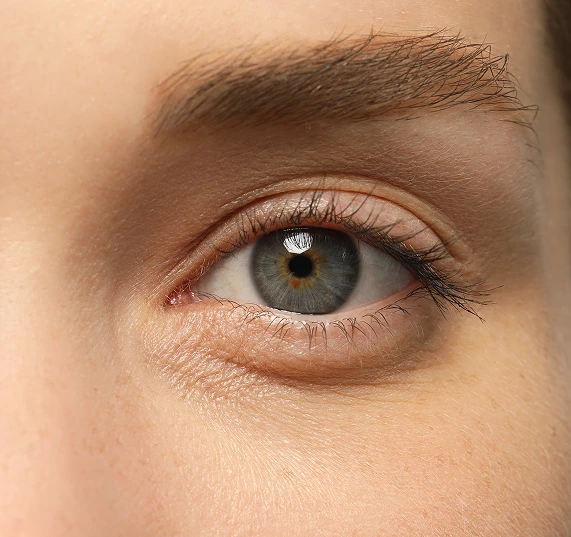
Eyelid Surgery Candidates
If you’re considering undergoing blepharoplasty, you may be an excellent candidate. Ideal candidates for this procedure:
- Want to improve their sad, angry, or tired-looking resting face
- Have excess skin, puffiness, or sagging of the upper or lower eyelids
- Don’t have any pre-existing eye conditions
- Do not have thyroid problems
- Are non-smokers
- Have realistic expectations about what eyelid surgery can accomplish
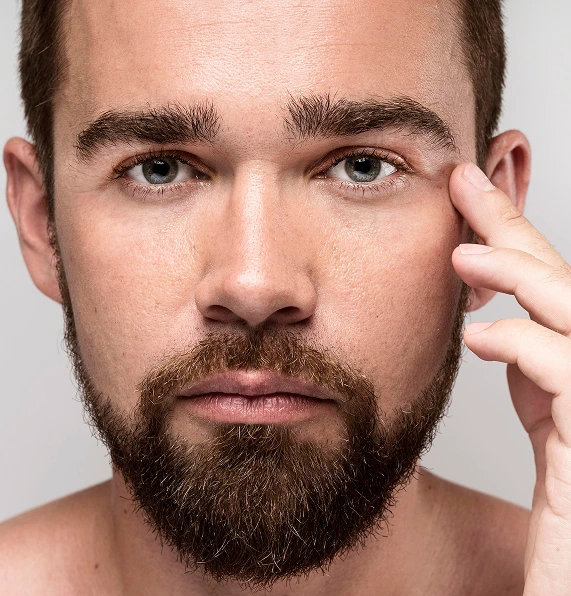
Benefits of
Blepharoplasty
Blepharoplasty offers a wide range of cosmetic and functional improvements for individuals bothered by changes around the eyes due to aging, genetics, or lifestyle factors. When performed with precision, including careful placement of skin incisions, the procedure delivers subtle yet impactful results. Here are the typical benefits:
- Smoother eyelid contours
- Reduced appearance of dark circles
- Correction of sagging eyelids
- More youthful appearance
- Improved field of vision
- Minimal scarring due to precise techniques
- Elimination of puffiness or under-eye bags
- Enhanced symmetry around the eyes
Eyelid Surgery Cost in Phoenix, AZ
The cost of blepharoplasty in Phoenix ranges from $3,000 to $15,000, depending on the complexity of the procedure and whether both upper and lower eyelids are treated. Factors such as the cosmetic surgeon’s experience, the surgical facility, and the type of anesthesia used can also influence the final price. While some cases performed for functional reasons may qualify for insurance coverage, most are considered elective and paid out-of-pocket.

Why Choose Regency Specialties?
If you’re interested in eyelid surgery in Surprise, Phoenix, Buckeye, or the nearby areas, schedule a consultation with us at Regency Specialties. We are a multi-specialty group delivering excellent procedures in dermatology, plastic surgery, and other fields, all in one practice. This offers a convenient solution for our patients. You will feel completely welcome from the moment you enter our door to your very last follow-up appointment.
To learn more or schedule a consultation, please call 623-243-9077 or contact us online.
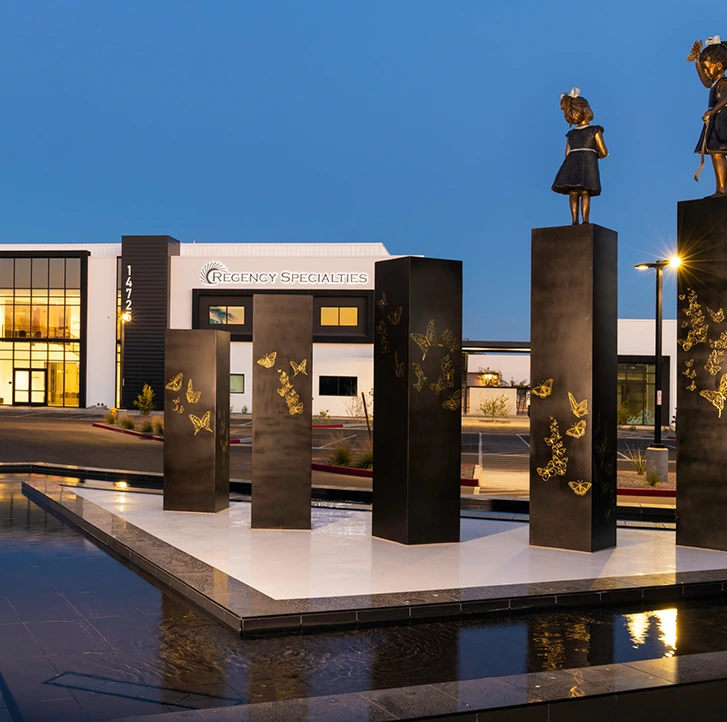
FAQs About Blepharoplasty
Is eyelid surgery painful?
Blepharoplasty is generally well-tolerated because we perform eyelid surgery under local or general anesthesia to ensure patient comfort during the procedure. After surgery, any discomfort is usually mild and can be managed with prescription pain medication. Most blepharoplasty patients find that symptoms improve quickly with proper aftercare, including cold compresses during the early stages of the recovery process.
Can I combine eyelid surgery with a brow lift?
Yes, combining eyelid surgery with a brow lift is a common approach, especially for patients with excess eyelid skin that results from a drooping brow. Pairing these facial plastic surgery procedures can produce more comprehensive results by rejuvenating both the upper eyelids and forehead area, enhancing overall facial harmony.
Can I combine eyelid surgery with facial fat grafting?
Eyelid surgery can be safely combined with facial fat grafting, particularly for those seeking volume restoration in addition to tightening and lifting. This combination is often performed alongside other facial rejuvenation procedures, such as a forehead lift, to achieve balanced and long-lasting aesthetic improvements.
Can cosmetic eyelid surgery address functional concerns?
While typically considered a cosmetic procedure, blepharoplasty can also correct functional issues, such as impaired peripheral vision caused by sagging upper eyelids. In such cases, the surgery offers both aesthetic and practical benefits, improving appearance and quality of life.
Can I go home the same day after blepharoplasty?
Yes, blepharoplasty is an outpatient procedure, which means patients can return home the same day after surgery. However, it’s recommended to have someone available to drive and assist during the initial hours of recovery.
Is the cost of eyelid surgery worth the benefits patients receive?
Eyelid surgery performed by our experienced doctors justifies the investment. The improvements in appearance and, in some cases, vision can have a meaningful impact on self-confidence and daily comfort.
Is blepharoplasty considered reconstructive surgery?
Blepharoplasty may be considered reconstructive when performed to correct functional issues, and these procedures are often carried out by oculoplastic surgeons with specialized training in eyelid anatomy and facial aesthetics.
Is eyelid surgery painful?
Blepharoplasty is generally well-tolerated because we perform eyelid surgery under local or general anesthesia to ensure patient comfort during the procedure. After surgery, any discomfort is usually mild and can be managed with prescription pain medication. Most blepharoplasty patients find that symptoms improve quickly with proper aftercare, including cold compresses during the early stages of the recovery process.
Can I combine eyelid surgery with a brow lift?
Yes, combining eyelid surgery with a brow lift is a common approach, especially for patients with excess eyelid skin that results from a drooping brow. Pairing these facial plastic surgery procedures can produce more comprehensive results by rejuvenating both the upper eyelids and forehead area, enhancing overall facial harmony.
Can I combine eyelid surgery with facial fat grafting?
Eyelid surgery can be safely combined with facial fat grafting, particularly for those seeking volume restoration in addition to tightening and lifting. This combination is often performed alongside other facial rejuvenation procedures, such as a forehead lift, to achieve balanced and long-lasting aesthetic improvements.
Can cosmetic eyelid surgery address functional concerns?
While typically considered a cosmetic procedure, blepharoplasty can also correct functional issues, such as impaired peripheral vision caused by sagging upper eyelids. In such cases, the surgery offers both aesthetic and practical benefits, improving appearance and quality of life.
Can I go home the same day after blepharoplasty?
Yes, blepharoplasty is an outpatient procedure, which means patients can return home the same day after surgery. However, it’s recommended to have someone available to drive and assist during the initial hours of recovery.
Is the cost of eyelid surgery worth the benefits patients receive?
Eyelid surgery performed by our experienced doctors justifies the investment. The improvements in appearance and, in some cases, vision can have a meaningful impact on self-confidence and daily comfort.
Is blepharoplasty considered reconstructive surgery?
Blepharoplasty may be considered reconstructive when performed to correct functional issues, and these procedures are often carried out by oculoplastic surgeons with specialized training in eyelid anatomy and facial aesthetics.



